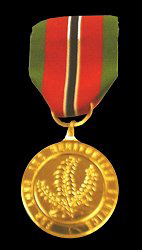Human Flower Project
Saturday, September 22, 2007
Scrutiny on the National Beauty of Trinidad and Tobago: Chaconia
A wild poinsettia, hurriedly chosen as the national flower, bears red flags and political history.
 Stamp with Chaconia
Stamp with Chaconia
Trinidad and Tobago
Image: ProTok
When Trinidad and Tobago declared independence from Great Britain, 1962, a group of “deciders” came together to choose the new nation’s official symbols. And from reading Julian Kenny’s fine piece for the Trinidad Express, it seems they were an astute and fast-acting bunch, flowerwise.
They selected a glorious Trinidadian, the wild poinsettia known as “chaconia,” to represent them. As befits a national emblem, the chaconia had color, locality, and timing working in its favor—and even a dubious etymology.
Many islanders assume that this plant, with its long stem of scarlet flowers, was named for Don Jose Maria Chacon, Trinidad’s last Spanish governor. Reasonable…except that the complex history of Trinidad (and Tobago) seems to owe a lot less to the Spanish than to English, French, African, and Chinese settlers. If you’re a bit rusty on these matters, check this good history site. )
Doing the chaconne engraving by H. Fletcher, 1735
Collection: The Victoria and Albert Museum, London
Photo: Encyclopædia Britannica
No, it seems much more likely that this amazing flower Warszewiczia coccinea, got its local name from “’chaconier’ after the French chaconne, a song/dance in which the dancers festooned themselves with small red flags that waved about as they danced.” The blooms do resemble tiny red flags. And with the world renown of calypso music and even “limbo,” it just seems right that the flower of this particular nation should be named for a flashdance.
(Kenny notes that Trinidad’s natives call this plant “wakamy.”)
Also in its favor, the wild chaconia always blooms just at the time of Trinidad and Tobago’s Independence Day, August 31. Waverly Fitzgerald wrote us recently about her family’s custom of adopting certain flowers that bloom right at folks’ birthdays as their personal “birthday flowers.” Why shouldn’t countries do the same?
And finally, the tasteful people of Trinidad and Tobago considered that chaconia’s red and green color coordinated well with the flag and national coat of arms.
The official Chaconia is Trinidad’s single wild variety. But today, we understand, a double chaconia, first propagated by David Auyong in 1957, is plentiful in gardens and nurseries across both Trinidad and Tobago. Carlyle Chang, one of the original “deciders” from 1962, told writer Johnny Lee, “We were not aware of the existence of the double variety at the time; otherwise we might have considered it over the single.” With six weeks to make these decisions, we’d say the committee made an excellent choice.
 Chaconia Medal (gold)
Chaconia Medal (gold)
Photo: Medals.org
National authorities here have awarded the Chaconia medal for forty years “to persons deemed to have rendered long or meritorious service in the jurisdiction of Community Service or Social Welfare” for Trinidad & Tobago.” It’s a red and green ribbon and a medal struck with the image of this blooming plant in gold, silver, and bronze.
We’re grateful to Julian Kenny for his excellent article illuminating the human-cultural freight behind this beautiful Caribbean plant. That freight includes some baggage, too. Kenny writes of the Chaconia medal, “Of the 200-plus awarded between 1969 and 2002, 84 per cent went to males and 16 per cent to females, while 77 per cent went to one “cultural” group and 23 per cent to another. Guess who! The latter, and women, have only a token place in the Order, regardless of their contributions and constitutional guarantees of equality.”
Culture & Society • Gardening & Landscape • Politics • Permalink




